The aspirations and hopes of a leader in any associations, are for their members to prosper together in everything they do. They want to ensure they can lead their members to greater heights when they endeavor to achieve their goals. In the case of rural tourism leaders, they may face many challenges throughout their tenure, such as instilling awareness and understanding among participants as well as a harmonised but individual development of all members.
The hopes of Kiulu Tourism Association (KTA) President of Mejin Maginggau, are on the same target; to prosper the people through the homestay programme and eco-tourism as a whole.
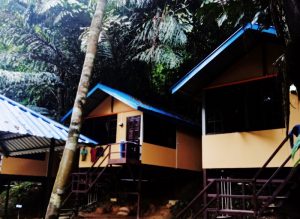
“As we all know, the homestay programmes are being actively promoted by the Government, and as such we want to go with this flow, to ensure that the rural populace are not left behind in this income making venture, even though its on a small scale.”
“We have much to offer in our natural environment, where we can showcase the beauty of nature in our area, Kiulu. We are well known for our rivers that meander through the villages and waterfalls. We have the vegetation along these rivers, fringed by forests. We have the mountains for trekkers, we bird and wildlife as well as flowering plants and wild fruits.”
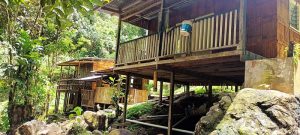
“To boot it all, we have one homestay where the guests can interact with the host family. There are also basic lodges available in the village, where guests can stay in bamboo houses near waterfalls, walk in a ‘back to nature’ lifestyle for a while, before they go back to their home.”
KTA members, numbering 60, in all are made aware of the importance of the environment in sustaining their homestay and lodges, and ensure that they adhere to the norm of eco-tourism, he shares.
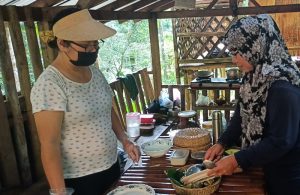
“Eco tourism is when we protect habitats and the environment. That includes preserving our natural resources with us being the keepers of our natural and cultural resources. We are the keepers, meaning that we ensure our natural environment is kept intact. All structures for tourism purposes should incorporate nature instead of usurping it.”
He stresses that as for cultural resources, this includes traditional paddy planting and all the activities connected to it, ethnic costumes and dances, food and intangible culture such as folklores and legends of the district.
On folklores and legends, he shares that Bukit Sangod for instance has a very colourful background.
“In the olden days, when tribal wars occurred, there were always contentions between the people of a respective area. The Bukit Sangod was a battleground to two groups of contending faction; one of them was from a neighbouring district.”
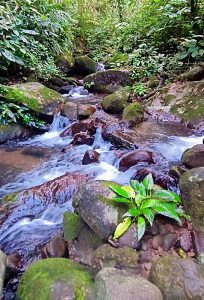
“They would come together and fight it out on that area, where a huge rock lied. They would fight until one group give up and run away, leaving their fallen comrade. The winning faction would take the heads of their enemy, and for each head, they carved a mark on the stone. After a long time, they decided to discontinue their fighting.”
“So they broke jars as symbols of them breaking their enmity, and to live in peace thereafter. I didn’t think much of this before, until I saw the huge stone with marks all over it. I often wonder how they managed to carry the stone up the steep hill,” Mejin shares, adding that this story can be included in the story-telling package.
“These are very important as they are part of our heritage and identity in this district. We have many stories and folklores in this area that can be utilize by members of the association as part of their tourism package. I am sure these will be of tremendous interest especially for our overseas guests. It will give them a better understanding on our way of life while adding to our tourism package or programme.”
On the tourism sites in Kiulu, he shares that Kiulu is well known for its white-water rafting, due to the fast-flowing river that flows through the district. White water-rafting is when a group of people on an inflated vessel rush down and trundle along on the river towards a certain point. An adrenalin-pumping ride that is well sought after by adventure buffs, and in Kiulu, mostly frequented by China tourists.
“We are also going to promote agro-tourism as well as incept an area where we will showcase our traditional costume, food, handicrafts and dances among others. We have an outdoor centre, where we promote activities such as zip-line and team-building.”
Back country tourism is also being promoted, he states where tourists are accorded an experience of the people’s basic lifestyle such as farming, paddy planting, tending pineapple plantation among others. A village has been picked for this activity, namely Kg Ratau.
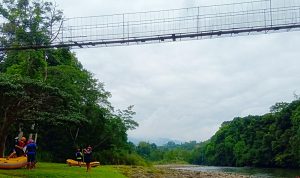
Trekking is popular in Kiulu, with many trails being promoted along the roadside into the villages of Kiulu. One of them is Dapako and another that will be opened to trekkers soon is the Bukit Sangod in Kg Lokub.
One of the places there that is being promoted actively is the Kiulu Rainforest Park. When one enters the gate down into the valley below, it feels like it’s a transition to another ambiance of Kiulu. It is like a small village with houses built around a stream. The stream is shallow with some pools but basically quite safe for children, with adult supervision, of course.
The houses on stilts actually reminds one of houses in the olden days where homes were on stilts, way up from off the ground. These houses are of course chalets that may house one or two people at any one time.
There are other activities there such as abseiling on a muddy slope. It may be an interesting activity out of the norm of everyday life.
The tourism industry in Kiulu is not new: it started some 30 years ago, Meijin shares, adding that they however became more active in 2015 with the establishment of the association.
“Kiulu was a pilot project to rural tourism development with Kadamaian Tourism,” he shares.
On accessibility issues where there are some complaints about the road conditions and cellphones services, he shares that they are being looked into and in fact cellphone accessibility is getting better due to the placement of a tower there.
On the road condition, he stresses that it is also being looked into but for the moment tour operators and tourists have to bear with it.
“It is not too bad considering, and in my opinion, the road condition is also an adventure of sorts for some people. I of course hope that it will be resolved soon and that we will have a sealed road for our convenience and comfort,” he says.
As for the future, he shares those efforts towards betterment is bearing fruits with four eco-tourism participation recently.
“We are looking at six more membership as our goal for 2022 is to have 10 eco-tourism participation. I am sure we will achieve this as we already have four early in the year,” he says adding that they hope to develop Kiulu as one of the main tourism destinations for Sabah.
“We know we are quite well known, but we should not rest and be satisfied. We want the community here to enhance and better their offerings. With the development we can make sure that we can accord employment to our fellow villagers and prosper together. We want our future generation to be able to work on with what we have now, and aim for better and greater heights.”-Anna Vivienne






